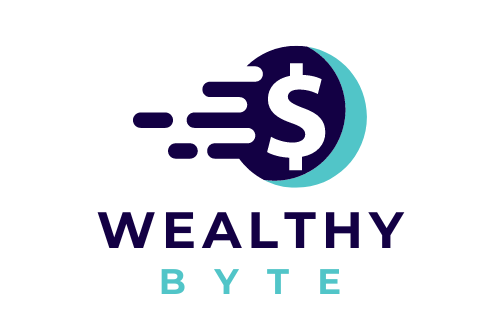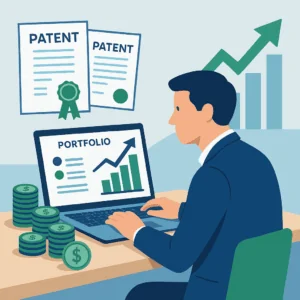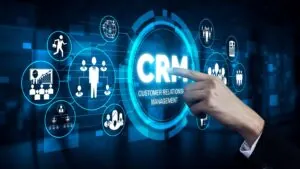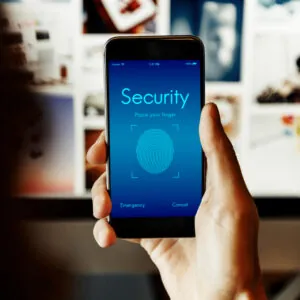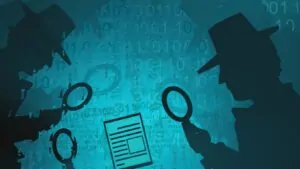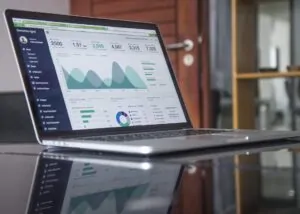Table of Contents
ToggleGetting that dreaded PayPal chargeback notification in your inbox? Your heart probably sank a little – and that’s completely understandable. Whether this is your first chargeback or you’ve dealt with them before, that sinking feeling never really goes away. But here’s the thing: panicking won’t help your case, and neither will ignoring it. The good news is that you have options, and with the right approach, you can often turn things around in your favor. Many sellers successfully fight chargebacks when they know what they’re doing. This guide will give you exactly that knowledge, step by step.
What Exactly Is a PayPal Chargeback?
Let’s start with the basics because understanding what you’re dealing with makes all the difference. A PayPal chargeback happens when your customer bypasses PayPal entirely and goes straight to their credit card company to dispute the charge. Think of it as the nuclear option – instead of working things out through PayPal’s normal dispute process, they’re bringing in the big guns. Here’s what makes chargebacks particularly tricky: PayPal doesn’t actually control the process. They’re more like the messenger between you and the credit card company. The card issuer calls the shots, follows their own rules, and makes the final decision. PayPal just helps collect information and tries to present your case in the Ideal possible light. The timing can also catch you completely off guard. Customers can file a PayPal chargeback up to 180 days after purchasing from you. That’s six months! You could be going about your business, thinking everything’s fine when suddenly you’re dealing with a dispute from an order you’d completely forgotten about.
The Clock Starts Ticking: Your First 24 Hours
When you see that chargeback notification, your first instinct might be to take a deep breath and deal with it tomorrow. Don’t. Seriously, don’t do that. You’ve got 10 days to respond and trust the experts when they say that time flies faster than you think. Here’s what experienced sellers always recommend: treat chargeback notifications like they’re on fire. Drop what you’re doing and at least read through the details. You don’t have to solve everything in the first hour, but you need to understand what you’re dealing with.
Check What Type of Chargeback You’re Facing
Not all PayPal chargeback notifications are created equal. Sometimes, you’ll receive a pre-chargeback alert, which is actually good news (relatively speaking). It means the customer is considering filing a chargeback, but they haven’t taken action yet. You’ve got 20 hours to issue a refund and make the whole thing go away. Regular chargeback notifications are different. The customer has already filed with their credit card company, and now you’re in fight mode. A simple refund won’t fix this – you’ll need to build a case and prove your side of the story.
Getting Into Your PayPal Resolution Center
Log into PayPal and head straight to the Resolution Center – this is your war room for the next few weeks. Everything you need to know about the chargeback is waiting for you there. PayPal lays out exactly what the customer is claiming went wrong, and let me tell you, some of these reasons will make your eyes roll. 
Building Your Case: What Evidence Actually Matters
Now comes the detective work. You need to build a case that’s so airtight that even the most skeptical credit card company employee will see things your way. This isn’t about writing a novel – it’s about presenting clear, compelling evidence that tells your side of the story.
Essential Documents You Must Gather
Start with the basics and work your way up. You’ll want to collect everything related to this transaction, including items that may seem minor. Here’s your evidence checklist: Transaction Records:
-
- Original order confirmation and receipt
-
- PayPal transaction ID and payment details
-
- Screenshots of your product listing as it appeared when they bought it
-
- Any promotional materials or discount codes they used
Delivery and Shipping Proof:
-
- Tracking numbers from your shipping carrier
-
- Delivery confirmation with signatures (this is gold!)
-
- Photos of the packaged item before shipping
-
- Insurance claims if the package was damaged or lost
Customer Communication:
-
- Every email, text, or message exchanged with the purchaser
-
- Social media interactions if they contacted you that way
-
- Phone call logs if you spoke directly
-
- Any attempts they made to resolve issues before the chargeback
Don’t underestimate the power of communication records. There have been cases where a single email from the customer saying “”Thanks, love it!”” completely destroyed their PayPal chargeback claim. People forget what they’ve said, but the internet remembers everything.
Writing Your Response: Tell Your Story Clearly
When you submit your response through the Resolution Center, think of it like you’re explaining the situation to a friend who knows nothing about what happened. Skip the business jargon and just tell the truth in plain English. Start with a clear timeline of events. When did they order? When did you ship? When was it delivered? What happened next? A simple chronological story is much easier to follow than jumping around between different points. Address their specific complaint head-on. If they claim they never received the package, show the tracking information and delivery confirmation. If they claim the item was broken, include photos of how you packaged it and any insurance you purchased. Don’t get defensive or emotional – just present the facts and let them speak for themselves.
Working with PayPal’s Chargeback Team
Here’s something many sellers don’t realize: PayPal has specialists whose entire job is fighting chargebacks on your behalf. These people know the credit card companies’ systems inside and out, and they want to help you win. But you need to make their job as easy as possible. When a chargeback specialist contacts you (and they will), respond immediately. They might ask for additional information or clarification about your evidence. Don’t make them chase you down – their time is limited, and they’re juggling multiple cases. Be organized in your communications with them. If they ask for tracking information, don’t send them a messy screenshot. Clean it up, highlight the important parts, and explain what they’re looking at. The easier you make their job, the harder they’ll fight for you.
Protecting Yourself: Prevention and Long-term Strategy
Look, fighting chargebacks is exhausting and time-consuming. Wouldn’t it be better to prevent them in the first place? After observing hundreds of these cases, most experts agree that the majority of chargebacks are preventable if you know what triggers them.
Understanding PayPal’s Protection Programs
PayPal offers Seller Protection, which can be a lifesaver when you’re dealing with a PayPal chargeback. If you qualify, PayPal will cover your losses even if you lose the dispute. However, here’s the catch: you must follow their rules exactly, or you won’t be covered. The requirements aren’t complicated, but they’re specific. You need to ship to verified addresses, use tracking for all shipments, and maintain detailed records. You also have to respond to disputes within their timeframes. Miss any of these requirements, and you’re on your own. Even with PayPal chargeback protection, you still want to fight and win these disputes. Too many chargebacks can harm your account standing and result in restrictions. Think of Seller Protection as your safety net, not your primary strategy.
Smart Prevention Strategies That Work
Prevention is really better than a cure when it comes to chargebacks. Many successful sellers have transformed their businesses by making simple changes that drastically reduce disputes. Here are the strategies that work:
Product Descriptions and Photos:
-
- Use multiple high-quality photos from different angles
-
- Include size references (like a coin or ruler) for scale
-
- List dimensions, weight, and materials clearly
-
- Mention any flaws or imperfections upfront
-
- Update photos if you change suppliers or materials
Customer Service Excellence:
-
- Respond to messages within 24 hours (faster is better)
-
- Be proactive about potential shipping delays
-
- Send tracking information automatically
-
- Follow up after delivery to ensure satisfaction
Smart Shipping Practices:
-
- Always use tracking, even for small items
-
- Require signatures for orders over $100
-
- Take photos of items before packaging
-
- Use sturdy packaging to prevent damage
-
- Consider shipping insurance for valuable items
The key is setting realistic expectations. Most customers are reasonable – they just want to know what they’re getting and when to expect it. Clear communication prevents most problems before they start.
Recognizing PayPal Chargeback Fraud vs. Legitimate Disputes
Not all chargebacks are created equal. Some customers have legitimate complaints, while others are trying to game the system. Learning to spot the difference helps you respond appropriately and protects you from repeat offenders. 
What Happens Next: The Waiting Game and Appeals
After you submit your response, the waiting begins. And let me warn you – it’s going to feel like forever. Chargeback decisions typically take 30 to 75 days, although this timeframe may be longer in some cases. There’s not much you can do during this time except be patient and respond promptly if PayPal requests additional information.
When You Win (Celebrate But Stay Vigilant)
Suppose the credit card company decides in your favor; congratulations! You’ll get your money back, and the customer will be charged again. But don’t get too comfortable – some customers will try again with a different reason or escalate to their bank. Keep your evidence handy for a few more months, just in case.
When You Lose (Don’t Give Up Yet)
Losing a chargeback stings, especially when you know you’re right. But sometimes, you have options for appeal, depending on which credit card company you’re dealing with. PayPal’s chargeback specialists can tell you if an appeal is possible and whether it’s worth pursuing. If you’re considering an appeal, you need new evidence—not just the same documents presented differently. Perhaps you have discovered additional communication with the customer, new proof of delivery, or evidence that clearly indicates fraud. Without new evidence, appeals rarely succeed.
Learning from Every Case
Whether you win or lose, every PayPal chargeback teaches you something valuable about your business. Maybe you need clearer product photos, better packaging, or faster customer service responses. Keep notes on what went wrong and what evidence worked greatly – this knowledge makes you stronger for next time. The most successful sellers I know treat each chargeback as a learning opportunity. They adjust their processes, improve their record-keeping, and get better at preventing future disputes. It’s not enjoyable, but it’s an inevitable part of running a business in the digital age.
Final Thoughts: Stay Calm and Fight Smart
Dealing with a PayPal chargeback notification doesn’t have to ruin your day or your business. Yes, it’s stressful. Yes, it takes time and effort. However, with the right approach, you can protect yourself and even emerge stronger on the other side. Remember that PayPal wants you to succeed – happy sellers mean more transactions and more revenue for them. Use their resources, work with their specialists, and don’t be afraid to ask for help when you need it. Most importantly, don’t let fear of chargebacks paralyze your business. Focus on providing great products and excellent customer service, keep good records, and handle disputes professionally when they arise. The vast majority of transactions go smoothly – don’t let a few problem cases overshadow the many satisfied customers who never cause any trouble at all.
